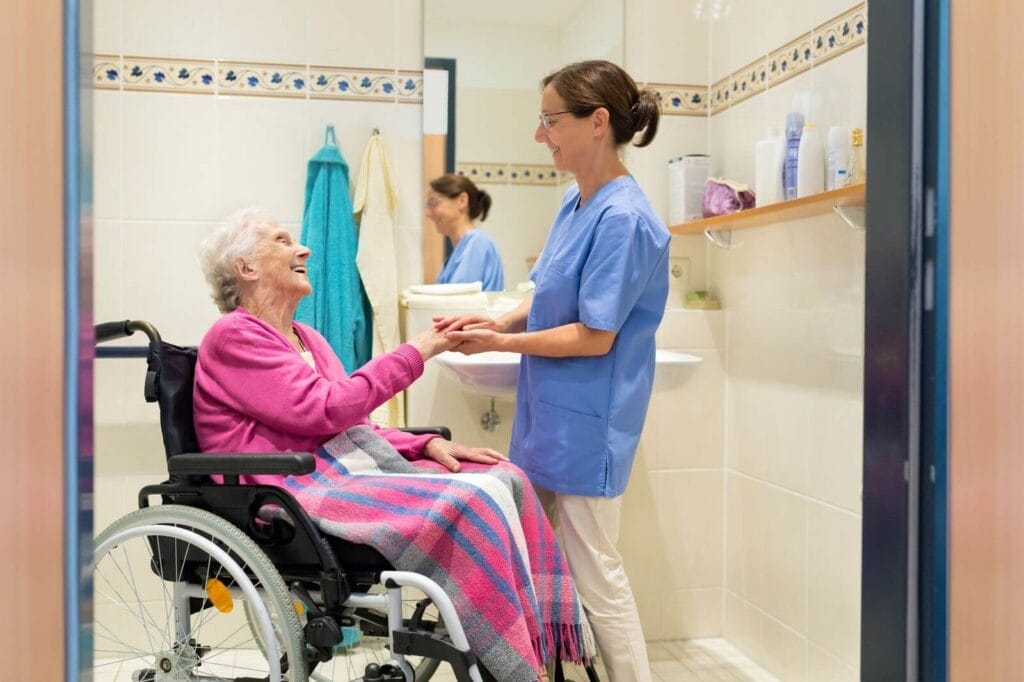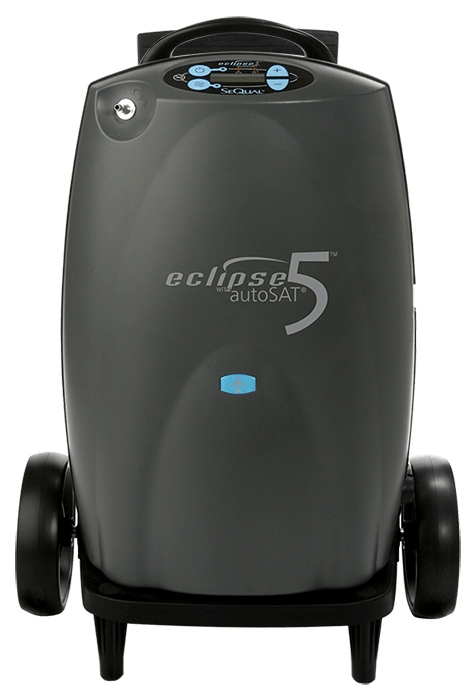
Falls are a serious concern, especially for older adults. The Centers for Disease Control and Prevention reports that around one in four seniors will fall each year. About 80% of all senior falls happen in the bathroom due to slick surfaces and mobility and endurance concerns during personal hygiene tasks like showers. While falls are a significant public health concern for older adults, there are ways to decrease the risk or prevent them from happening altogether. Making improvements or adjustments to the bathroom is one way to make an older adult’s living environment safer. Here are a few tips and improvements you can implement to improve bathroom safety.
Choose a primary bathroom
If your loved one lives in a home with more than one bathroom, the one they currently use might not be the safest choice. For example, a small en suite bathroom that cannot accommodate a walker could be a fall risk. A bathroom with a shower that requires stepping over a tall bathtub wall is also not the safest option.
Take time to look objectively at the bathrooms in the home. Choose one that can accommodate any mobility aids, has a step-in shower (if possible), and can be safely navigated. Your loved one can still use their en suite for bathroom trips, especially in the middle of the night, but showering and grooming might be safer in a different bathroom.
Involve your loved one in the process, discussing each bathroom’s benefits and drawbacks. Then, once you have both decided, move any supplies they need to the appropriate bathroom.
Install bathroom safety equipment
Even if your loved one is steady on their feet, installing certain bathroom safety equipment can prevent falls that may occur due to lack of energy, mobility, or endurance. It is wise to install equipment before your loved one needs it. Fortunately, most bathroom safety equipment is inexpensive and easy to install.
Grab bars, for example, are an excellent addition to your loved one’s primary bathroom. Purchase any necessary installation tools and materials so you can be sure to install them correctly. Some should be placed near the toilet and in the shower, using your loved one’s strongest and dominant side as your guide. Install at least one horizontal and one vertical bar. If you can’t install them yourself, this is a quick job for an experienced handyman.
You can also consider grab bars that do not require home construction. There are various grab bars on the market that use suction cups to attach to the wall. Make sure you choose suction grab bars with indicators, which use a mechanism to display when the suction cup is activated and properly attached.
Next, consider outfitting the shower to be as safe as possible. A shower seat and a handheld showerhead are great first steps. You can install a shower seat that folds up and doesn’t take up too much space. Your loved one can fold it down from the wall when needed. These upgrades are not too expensive and can be a welcome reprieve for a senior who may become tired from standing in the shower.
You can also find more cost-effective shower seat options, such as lightweight, portable shower chairs that can fit in most typical bathtubs and shower spaces. Some shower chairs have transfer benches so the user can safely transfer into the shower by sitting on the bench and sliding over. Other shower chairs have handles so the user can sit in the shower as needed and have something to hold on to.
Consider a walk-in tub or shower
If you or your loved one has a larger budget for safety improvements, consider removing their existing bathtub and installing a walk-in tub or shower. Though this project will be more costly than buying a simple shower chair, walk-in tubs can meet more modest budgets or provide all the bells and whistles of more luxurious options. Walk-in showers can be safer as they eliminate the need for a high step in and out of a slippery shower. Even better, step-in showers are quite trendy right now, which means you might increase the home’s property value by installing one.
You won’t be able to install a walk-in shower on your own, but you can look for a reputable contractor in your loved one’s area who can take care of the installation for you.
Remove or secure trip hazards on the bathroom floor
Falls in the bathroom can happen due to slippery, wet surfaces, rugs, towels, or unsecured floor mats. To prevent falls, make quick improvements to your loved one’s bathroom floor setup. Begin by adding a place to put used towels, such as a hamper, to keep them from ending up on the floor. Also evaluate the rugs in your loved one’s bathroom. Are they too thick for a walker, wheelchair, or cane to navigate? If so, a thinner version might be the best decision. Next, secure any rugs in the bathroom: Use rug tape to secure the rug to the floor so that no corners flip up. If rug tape doesn’t help, you might consider installing slip-proof adhesive rugs.
Adding nonslip stickers to the bathtub or shower floor can also enhance safety. When installed correctly, these slip-proof options can offer traction to your loved one’s bare feet on a wet surface.
Explore medical alert systems
Falls in the bathroom are especially dangerous because there is often no way to call for immediate help. Seniors who fall in the shower are less likely to have a cell phone nearby, which can make it challenging to dial 911. Depending on your loved one’s situation, a medical alert system could be a wise decision.
Medical alert systems connect someone experiencing an emergency with an operator who can summon family members or emergency services. Most systems work with the push of a button, but some devices also have fall detection, which will automatically call operators if the device detects a fall.
Wall buttons that pair with a home-based medical alert service can be placed in the shower or near the toilet. Wearable devices, like pendants or watches, accompany medical alert systems and are typically waterproof so that they can be worn and used in the shower. Some may have fall detection.
This option can provide peace of mind to seniors and their loved ones. However, you will have to pay a monthly subscription to maintain access to the medical alert system services.
Home care support for bathroom safety
If showers are unsafe or generally taxing for a senior, it can be well worth the investment to hire a visiting caregiver from a home care agency to help with the task a few times per week. Caregivers get to know your loved one and provide just the necessary assistance with activities of daily living, like showering, so that your loved one maintains their independence while having that extra support and safety. The home care aide may sit outside the shower to ensure safety while the senior bathes, or they may help the older adult with the task, depending on their needs.
Home care agencies can provide a caregiver for a few hours to assist with showering. If your loved one needs more hands-on care, you can arrange for a longer caregiver visit. Medicare does not cover home care unless prescribed by a physician and deemed medically necessary, but you may be able to offset the costs with Veterans benefits or through Medicaid if your loved one is eligible.
Attention to bathroom safety and fall prevention practices can support your loved one as they age in place in the home of their choice. With some simple adjustments, such as installing safety equipment, securing trip hazards, and more, you can ensure that they remain safe and healthy in the home.








